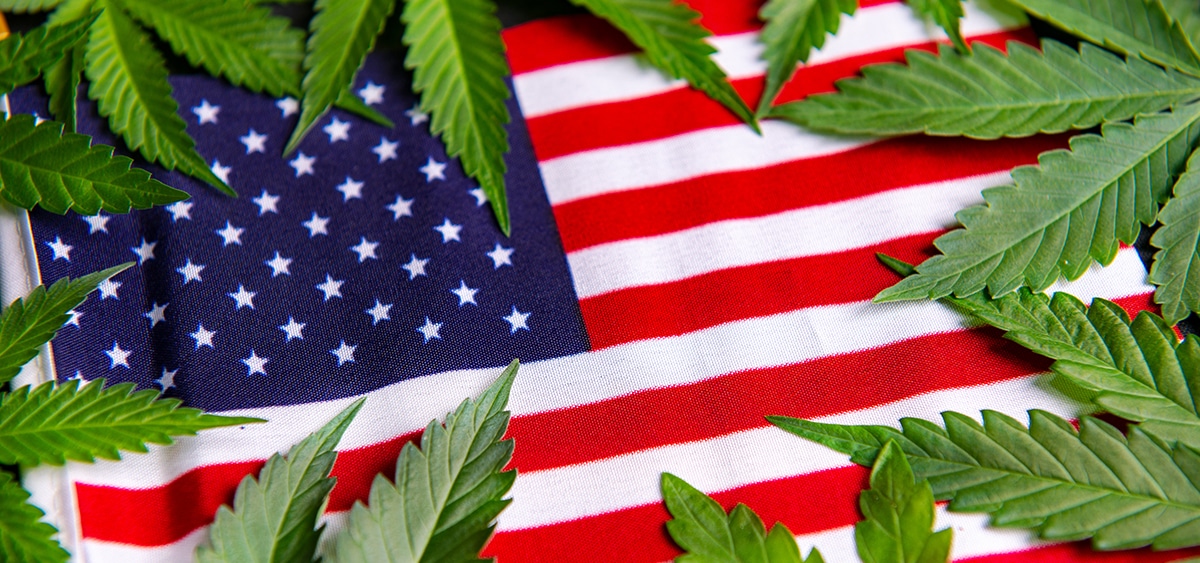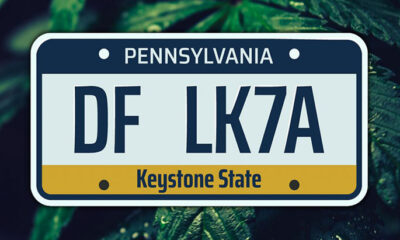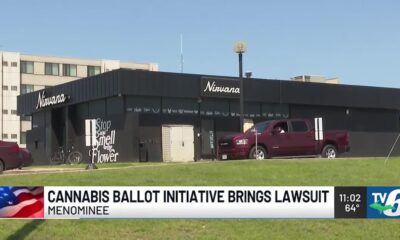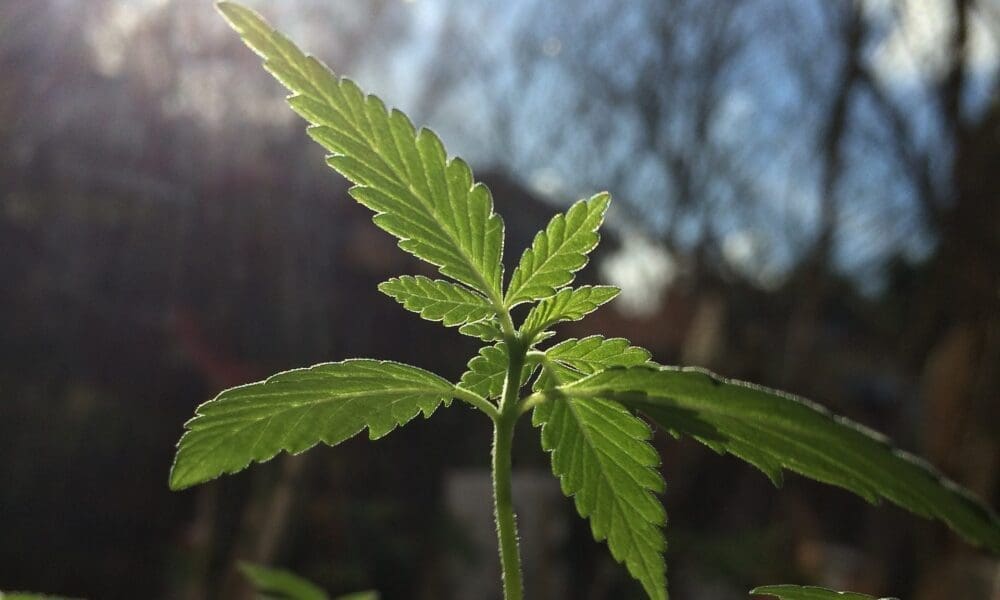New federal health data indicate that while past-year marijuana use in the U.S. overall has climbed in recent years, the rise has been “driven by increases…among adults 26 years or older.” As for younger Americans, rates of both past-year use and cannabis use disorder, by contrast, “remained stable among adolescents and young adults between 2021 and 2024.”
In fact, past-year use among people ages 12 to 20 fell to a four-year low in 2024, the data show—even as a growing number of states enact laws legalizing marijuana for people over the age of 21. The results are contrary to arguments voiced by prohibitionist advocates who have long argued that it is important to keep cannabis illegal for adults in order to prevent youth use.
The data published by the Substance Abuse and Mental Health Services Administration (SAMHSA) come from the agency’s release of results from the latest National Survey on Drug Use and Health (NSDUH), which annually since 1971 has asked Americans ages 12 and older questions about their drug use, mental health and related treatment.
“The annual NSDUH provides timely statistical information on substance use and mental health in the U.S.,” SAMHSA Principal Deputy Assistant Secretary Art Kleinschmidt said in an agency press release Monday. “These data are incredibly valuable to researchers, clinicians, policymakers, and others, allowing for greater understanding of the nation’s behavioral health, and to help inform actions in support of President Trump’s vision to Make America Healthy Again.”
Among all respondents, the poll found, self-reported marijuana use within the past 12 months rose from 19.0 percent in 2021 to 22.3 percent last year.
While the SAMHSA press release sent on Monday about the report doesn’t highlight different trends by age levels, companion data from the survey distinguish the overall rise in marijuana use from stable or declining trends among “underage” Americans, aged 12 to 20.
In 2024, the reported rate of past-year cannabis use among that age group was 16.7 percent, hitting a four-year low.
The rate rose between 2021 (17.9 percent) and 2022 (19.2 percent), then fell during the next to years to 18.4 percent in 2023 and 16.7 percent last year.
2024 National Survey on Drug Use and Mental Health, SAMHSA
Between 2021 and 2024, the states of Connecticut, Delaware, Maryland, Minnesota, Missouri, New Mexico, New York, Ohio, Rhode Island and Virginia all legalized cannabis for adults over 21 year of age.
A supporting graphic in from SAMHSA also breaks down use by age group somewhat.
It shows that young adults, ages 18 to 25, remain most likely to have used marijuana in the past year, at 35 percent—though that rate was lower than at any other point since 2021.
About 1 in 10 young people ages 18 to 25 (10.4 percent) reported past-year use, meanwhile—also lower than at any other time over the four-year period.

2024 National Survey on Drug Use and Mental Health, SAMHSA
SAMHSA cautioned that given increases in adult use of marijuana, the generally stable trends among youth use shouldn’t be taken for granted.
“The increases in past-year illicit drug use and past-year drug use disorders are largely driven by increases in marijuana use and marijuana use disorder among adults 26 years or older,” the federal report says. “Although marijuana use and use disorder trends remained stable among adolescents and young adults between 2021 and 2024, the increase in adult use is important to inform prevention and treatment activities given changing attitudes around marijuana use and the shifting state policy landscape which has increased risk for marijuana use and use disorder among young people, and enabled the ready availability of high-potency marijuana products linked to negative health impacts in communities across the country.”
Other notable substance-related findings from the new survey include that past-year use of hallucinogens increased among all Americans 12 and older, from 2.7 percent in 2021 to 3.6 percent last year.
Past-year cocaine use declined slightly over the same time period, from 1.7 percent to 1.5 percent. Prescription opioid misuse also diminished from 3.0 percent to 2.6 percent.
People with any sort of drug use disorder during the past year, meanwhile, increased from 8.7 precent to 9.8 percent. Those figures do not include alcohol use disorder, which decreased from 10.6 percent to 9.7 percent.
Overall, 16.8 percent of Americans—48.4 million people—reported some sort of substance use disorder in 2024, the NSDUH data show.
Questions related to recovery, meanwhile, found that “1.7 million adults aged 18 or older (or 12.2%) perceived that they ever had a problem with their use of alcohol or drugs,” SAMHSA said. “Among these adults, 74.3% (or 23.5 million people) considered themselves to be in recovery or to have recovered.”

2024 National Survey on Drug Use and Mental Health, SAMHSA
Other questions looked at modes of marijuana use, finding that combustion remains the most popular form of consumption, with 73.9 percent of cannabis users reporting smoking within the past year. About half (49.8 percent) ate or drank cannabis products, while 39.8 reported vaping, 14.1 reported dabbing and 14.1 reported “some other mode of marijuana use.”
Respondents were able to choose as many responses to that question as applied.
As for vaping specifically, the data show it’s especially common among younger marijuana users, with 71.1 percent of respondents 12 to 17 saying they vaped cannabis in the past year. Among those 18 to 25, 52.0 percent said they had vaped, meanwhile, as did 33.0 percent of those 26 or older.

2024 National Survey on Drug Use and Mental Health, SAMHSA
Overall, 38.0 percent of cannabis consumers 12 and older said they vaped marijuana in 2024, while 62.0 percent said they used cannabis but did not vape.
SAMHSA’s report on the NSDUH findings a year ago also included a longer-term look at marijuana use trends, finding that youth use appeared to have fallen significantly in the preceding decade, as dozens of states legalized marijuana for adult or medical use.
The percentage of young people aged 12 to 17 who had ever tried marijuana, for example, dropped by 18 percent from 2014—when the first legal recreational cannabis sales in the U.S. launched—to 2023. Past-year and past-month use rates among young people also declined during that time period.
While the NSDUH survey has been conducted for decades, its methodology has changed over the years, making some historical comparisons difficult or impossible. Data from recent years, including 2023, 2022 and 2021 “should not be combined with data from 2020 or prior years for a variety of methodological reasons,” a SAMHSA spokesperson said last year in an email about that report.
A year earlier, in 2022, NSDUH for the first time asked respondents about their methods of marijuana consumption—including “smoking; vaping; dabbing waxes, shatter, or concentrates; eating or drinking; putting drops, strips, lozenges, or sprays in their mouth or under their tongue; applying lotion, cream, or patches to their skin; taking pills; or some other way.”
Release of the latest NSDUH data comes on the heels of a SAMHSA webinar earlier this month in which a Johns Hopkins University researcher acknowledged that self-reported cannabis consumption by adults has risen as more states have legalized, while use by youth has generally remained flat or fallen.
“Use among youth is one of the biggest areas of concern related to the legalization and increased accessibility of cannabis,” the presenter said, “but surprisingly, that cohort has actually maintained relatively stable [for] both past-year and daily use.”
A separate secret shopper study out of New York City earlier this year found that state-licensed marijuana retailers were far more consistent about discouraging youth access to cannabis compared to illicit stores, with regulated outlets consistently verifying the age of would-be buyers as well as avoiding cartoon signage and products that appeal to young people.
All of the licensed retailers that were observed checked purchasers’ ID both before store entry and prior to purchase, that study found. Unregulated stores, by contrast, checked IDs before entry only 10 percent of the time, and verified ages before purchase less than half (48 percent) of the time.
Across the U.S., research suggests that marijuana use by young people has generally fallen in states that legalize the drug for adults.
A report from the advocacy group Marijuana Policy Project (MPP), for example, found that youth marijuana use declined in 19 out of 21 states that legalized adult-use marijuana—with teen cannabis consumption down an average of 35 percent in the earliest states to legalize.
The report cited data from a series of national and state-level youth surveys, including the annual Monitoring the Future (MTF) Survey, which is supported by the National Institute on Drug Abuse (NIDA).
The latest version of the MTF, released late last year, found that cannabis use among eighth, 10th and 12 graders is now lower than before the first states started enacting adult-use legalization laws in 2012. There was also a significant drop in perceptions by youth that cannabis is easy to access in 2024 despite the widening adult-use marketplace.
Another survey from the U.S. Centers for Disease Control and Prevention (CDC) last year also showed a decline in the proportion of high-school students reporting past-month marijuana use over the past decade, as dozens of states moved to legalize cannabis.
At the state level, MPP’s assessment looked at research such as the Washington State Healthy Youth Survey that was released in April 2024.
That survey showed declines in both lifetime and past-30-day marijuana use in recent years, with striking drops that held steady through 2023. The results also indicated that perceived ease of access to cannabis among underage students has generally fallen since the state enacted legalization for adults in 2012—contrary to fears repeatedly expressed by opponents of the policy change.
In June of last year, meanwhile, the biannual Healthy Kids Colorado Survey found that rates of youth marijuana use in the state declined slightly in 2023—remaining significantly lower than before the state became one of the first in the U.S. to legalize cannabis for adults in 2012.
The findings broadly track with other past surveys that have investigated the relationship between jurisdictions that have legalized marijuana and youth cannabis use.
For example, a Canadian government report recently found that daily or near-daily use rates by both adults and youth have held steady over the last six years after the country enacted legalization.
Another U.S. study reported a “significant decrease” in youth marijuana use from 2011 to 2021—a period in which more than a dozen states legalized marijuana for adults—detailing lower rates of both lifetime and past-month use by high-school students nationwide.
Another federal report published last summer concluded that cannabis consumption among minors—defined as people 12 to 20 years of age—fell slightly between 2022 and 2023.
Separately, a research letter published by the Journal of the American Medical Association (JAMA) in April 2024 said there’s no evidence that states’ adoption of laws to legalize and regulate marijuana for adults have led to an increase in youth use of cannabis.
Another JAMA-published study earlier that month that similarly found that neither legalization nor the opening of retail stores led to increases in youth cannabis use.
In 2023, meanwhile, a U.S. health official said that teen marijuana use has not increased “even as state legalization has proliferated across the country.”
Another earlier analysis from the U.S. Centers for Disease Control and Prevention found that rates of current and lifetime cannabis use among high school students have continued to drop amid the legalization movement.
A separate NIDA-funded study published in the American Journal of Preventive Medicine in 2022 also found that state-level cannabis legalization was not associated with increased youth use. The study demonstrated that “youth who spent more of their adolescence under legalization were no more or less likely to have used cannabis at age 15 years than adolescents who spent little or no time under legalization.”
Yet another 2022 study from Michigan State University researchers, published in the journal PLOS One, found that “cannabis retail sales might be followed by the increased occurrence of cannabis onsets for older adults” in legal states, “but not for underage persons who cannot buy cannabis products in a retail outlet.”
The trends were observed despite adult use of marijuana and certain psychedelics reaching “historic highs” in 2022, according to separate 2023 data.

